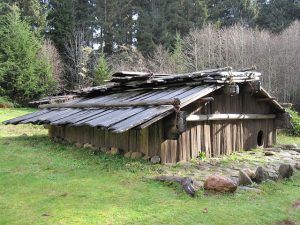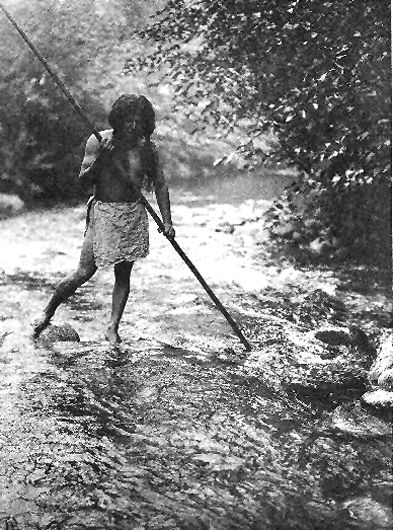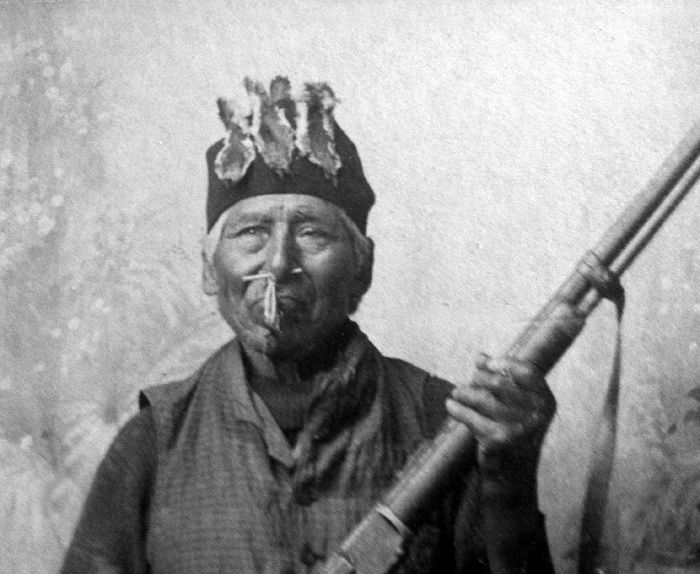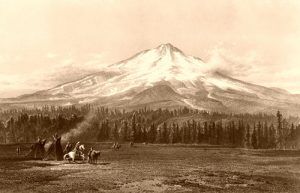The Shasta Indians were a group of small tribes or divisions forming the Shastan linguistic family of northern California and extending into southwestern Oregon. Their language was of the Hokan family. The Shasta called themselves “Kahosadi” or “plain speakers.” The culture and customs of the Shasta were much the same, but linguistically they were divided into four groups speaking divergent dialects. These included the Shasta, Konomihu, Okwanuchu, and New River Shasta.
The Shasta people were hunters, fishers, and gatherers who lived semi-nomadic lifestyles. They hunted in the summer, building wickiups as temporary shelters. In the winter, they lived in villages of semi-subterranean oblong plank houses. Primarily they ate acorns, seeds, and roots, but the fish, particularly salmon, was an essential factor in the food supply. They utilized broad, clumsy dugout canoes for fishing. The estimated pre-contact Shasta population in California was approximately 6,000 people.
The first recorded encounter with Europeans was in 1826, when a Hudson’s Bay Company expedition came into the Klamath Mountains to trap beaver. Shasta favorably received them. The first population decline occurred from 1830-1833 when fur trappers spread a malaria epidemic. By 1851, the adverse effects of the disease had reduced the Shasta population to 3,000. With the opening of the trade route from Oregon to California by way of Sacramento Valley in the middle of the 19th century, the Shasta came more into contact with civilization.

A Yurok winter dwelling. Shasta residencies were largely the same in design. Photo courtesy Wikipedia.
During the California Gold Rush, beginning in 1848, the lives of the Shasta changed dramatically. This was a devastating process for the Shasta as their lands soon had thousands of miners operating along various waterways. Conflicts arose as the outsiders didn’t respect the Shasta or their homeland. Introducing new diseases and fighting against invading Americans rapidly reduced the number of Shasta.
In 1851, a treaty called for a Shasta reservation in Scott Valley, but California refused to let the treaty be ratified. By the Chasta Costa Treaty in 1854, the California Shasta lost their land and, in 1856, were removed to Grande Ronde Siletz reservations, both in Oregon. Some of the Shasta were involved in the Rogue River Wars (1855-1856).
Militarily defeated, suppressed, and driven from their native villages, beginning in 1870, many of the Shasta participated in new spiritual practices, including the Ghost Dance, Earth Lodge religion, and Big Head cult.
By the early years of the 20th century, perhaps only 100 Shasta individuals existed. In 1934, efforts to establish the Quartz Valley Indian Reservation in Fort Jones, California, began, and by 1939, some members of the tribe moved there with the Klamath Karuk Indians. Today, this group is federally recognized. However, the Shasta, as a separate tribe, are not. Some Shasta descendants still reside at the Grande Ronde and Siletz Reservations in Oregon.
In 1984, the Shasta nation applied for federal recognition. This process continues today.
The Shasta language no longer has fluent speakers, but language revitalization efforts are underway.
©Kathy Alexander/Legends of America, updated March 2023.
Also See:
Indians and Emigrants on the Overland Trails
Native Americans – First Owners of America
Native American Photo Galleries
Timeline of the Native Americans
Sources:
Hodge, Frederick Webb, Compiler. The Handbook of American Indians North of Mexico. Bureau of American Ethnology, Government Printing Office. 1906.
Shasta Indian Nation
Wikpedia



